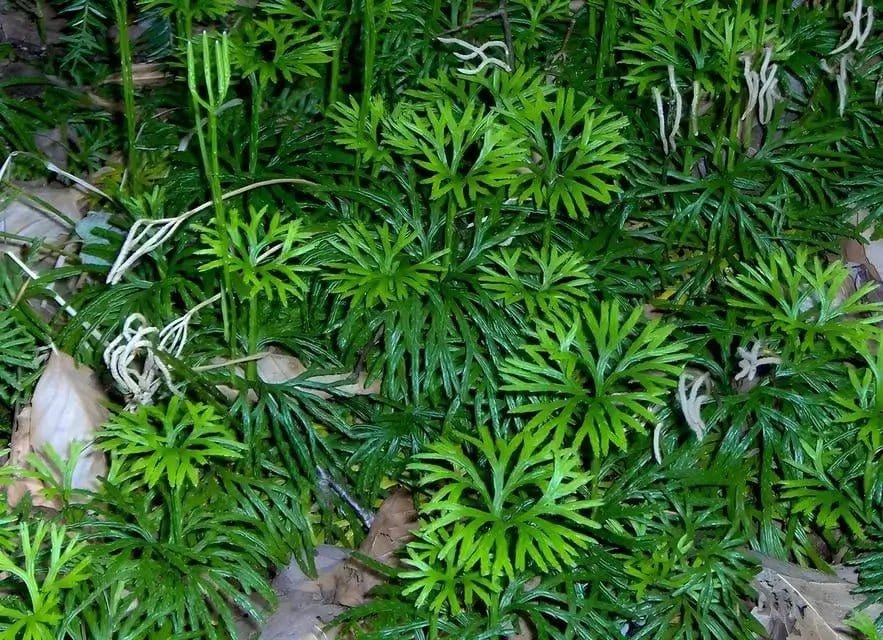Fan Clubmoss
Couldn't load pickup availability
Ships 10-12 Days
Diphasiastrum Digitatum - Fan Clubmoss
Fan Clubmoss is an evergreen perennial herbaceous plant native to North America, Europe, and Asia. It belongs to the Lycopodiaceae family, which includes other species such as ground pines and spike mosses. The plant has a unique appearance, with thin, wiry stems that grow up to 30 cm in height and fan-shaped leaves resembling a bird's tail feathers.
Reproduction System
One of the most remarkable features of it is its reproductive system. The plant produces two types of spores, microspores, and megaspores, which turn into male and female gametophytes. The male gametophytes produce sperm cells, while the female gametophytes produce egg cells. Fertilization occurs when the sperm cells swim to the egg cells, and the resulting zygote develops into a sporophyte, eventually growing into a mature plant.
Fan Clubmoss Medicinal Uses
It has been used for medicinal purposes throughout history. Native Americans used it to remedy multiple ailments, including urinary tract infections, fevers, and respiratory problems. The plant contains several active compounds, including lycopodium and lycopene, which have been shown to possess antifungal, antibacterial, and anti-inflammatory properties.
Other Uses
Besides its medicinal uses, it has been used for decorative purposes. The plant is often used in floral arrangements and is famous for creating bonsai trees. Its unique appearance and ease of care make it a popular choice for gardening enthusiasts. It is commonly used in landscaping and erosion control. Its shallow roots and ability to spread quickly make it an excellent ground cover.
Appearance
For the organic matter, it is best to blend shredded leaves and pine needle mulch into the first 4 to 5 inches of soil before planting. The plant needs to be located in an area that receives partial to full shade, as it does not tolerate direct sunlight well.
Its intolerance to sunlight makes it perfect for shade gardens and fills areas of a yard that don't grow grasses well. It requires shallow water, prefers the soil to be dried out between watering, and tolerates drought's low water conditions.
This plant requires very little pruning maintenance, only to be cut back or transplanted when its spread needs to be controlled. The evergreen perennial is both heat- and cold-tolerant, which allows it to provide visual interest in gardens and yards during multiple seasons.
Its cedar-like appearance makes it a great holiday decoration piece, fresh or dried.
This Is How Your Plants Will Look upon Delivery
Shipping date depends on the date displayed and chosen when you order from the product's page.
We do not offer warranties on products after 5 days past receiving your plants.



Well-stocked plant nursery , and with a website that's easy to navigate
We're happy to see that you had a 5-Star experience at Tennessee Wholesale Nursery. Thanks for sharing!

